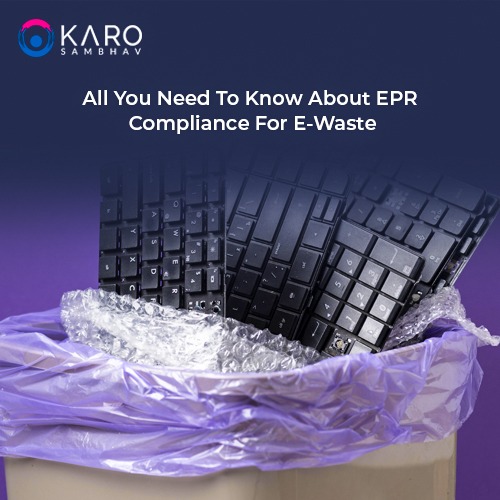Inefficient Segregation: The Main Obstacle To Effective eWaste Recycling
Electronic gadgets have become a necessary component of our everyday lives in the current digital era. But as technology develops so quickly, electronic garbage, or "e-waste," is becoming a major environmental issue. Electronic items that have been thrown, including televisions, laptops, smartphones, and other gadgets, are referred to as e-waste. Even while e-waste contains priceless resources like copper, silver, and gold, improper disposal of it presents serious threats to human health and the environment. Strict laws and regulations, such as the E-waste Management Rules, 2016, govern e-waste recycling in India. These restrictions are designed to reduce the harmful impacts of e-waste on the environment and public health.
What is Inefficient Segregation of E-Waste?
Segregation refers to the systematic filtration of multiple elements in e-waste for a hassle-free way of processing and enhanced value extraction. When this separation is not conducted properly, different elements get blended, thereby making recycling quite difficult.
In India, a large number of e-waste ends up in informal sectors. Here, unscientific approaches are implemented for extraction that directs to toxic byproduct generation. Elements like batteries and circuits get disassembled together leading to contamination.
Ineffective segregation is still a major barrier to efficient e-waste recycling in India, even with the regulatory framework of e-waste authorization in place. Sorting e-waste into distinct categories according to its composition and recyclability is known as segregation. However, incorrect e-waste segregation at the source is a result of both poor infrastructure and understanding. Due to this, recycling facilities receive mixed streams of e-waste that comprise a variety of elements, which makes the recycling process time-consuming and expensive.
Absence of Standardized Approaches
A primary obstacle in the segregation of e-waste is the absence of standardised techniques for collection and awareness campaigns. Many consumers are ignorant of the advantages of recycling and the significance of separating e-waste. They discard electronic equipment carelessly as a result, creating streams of mixed e-waste that are challenging to handle. Furthermore, by releasing dangerous materials into the environment, unregulated facilities that dismantle electronic waste contribute to the problem.
Need for Investments
To further enhance the processes involved in the sorting and recycling of e-waste, investments in technology and infrastructure are needed. It will be easier for correct e-waste disposal and processing if additional collection centres and recycling facilities are established, especially in underprivileged areas. Furthermore, e-waste segregation can be made more effective and efficient by implementing cutting-edge sorting and recycling technology. This can result in greater rates of material recovery and resource conservation.
To sum up, ineffective segregation continues to be a major barrier to India's successful e-waste recycling. A multifaceted strategy is needed to address this issue, including investing in technology, enhancing infrastructure, and increasing awareness. A more sustainable future can be achieved by stakeholders by encouraging appropriate e-waste segregation and recycling procedures, which also help to reduce the threats that e-waste poses to human health and the environment.



Comments
Post a Comment